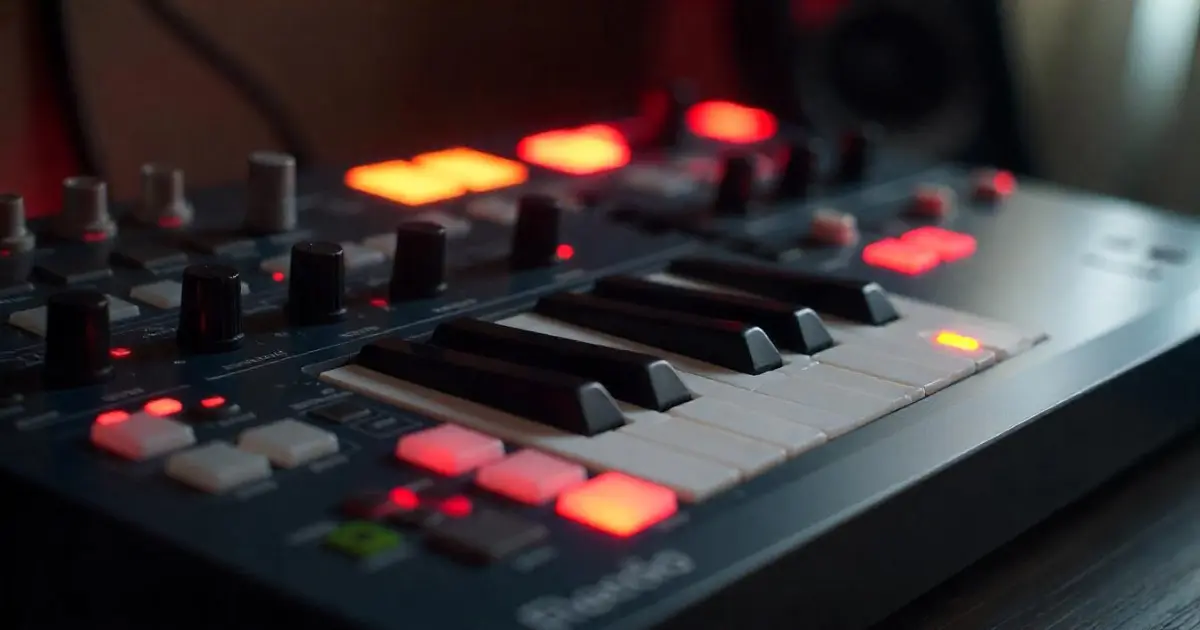In the twilight between the past and the future, amid the clamor of a digital revolution and the echo of gritty street narratives, a new sound has carved its own relentless path: trap. No longer confined to the underground, trap has infiltrated every corner of popular culture, its hypnotic beats a call to arms for the restless and the daring. This is not just a guide—it’s an expedition into the soul of trap, an unapologetic manifesto that challenges every preconception about what it means to create true, authentic trap instrumentals.
In this sprawling narrative, we’ll break down the art and science of crafting trap beats instrumentals—exploring everything from the anatomy of a killer trap beat instrumental to the cultural resonance of instrumental trap music. We’ll delve deep into the evolution of trap type beat aesthetics and expose the paradoxes that make the genre both formulaic and infinitely malleable. Prepare yourself for a deep dive into history, technique, and raw creative energy—a guide that marries the high-octane pulse of today’s urban soundscape with the storied traditions of hip-hop.
I. The Cultural Genesis of Trap: More Than Just Beats
Before you even fire up your DAW (Digital Audio Workstation), you need to understand where trap comes from and why it’s become such a seismic force in modern music. The story of trap is as much about culture and politics as it is about sound design. Born in the suffocating heat of Southern streets, trap emerged from the crucible of urban struggle—a blend of sorrow, defiance, and the relentless pursuit of survival. It wasn’t just music; it was a way of life, a coded language of pain and aspiration that resonated with those caught in the crossfires of economic despair and systemic neglect. Discover more about the genre’s roots and cultural impact on the Beats To Rap On homepage and in our dedicated music section.
Historically, trap music was a raw outcry against an oppressive system, a genre that captured the duality of life on the margins. The gritty authenticity of early trap instrumentals, laden with menacing bass lines and the clatter of hi-hats, was a reflection of a harsh reality where every beat was a pulse of defiance. As the genre evolved, it absorbed influences from electronic music, rock, and even classical motifs, creating a rich tapestry that blurred the lines between street art and high art.
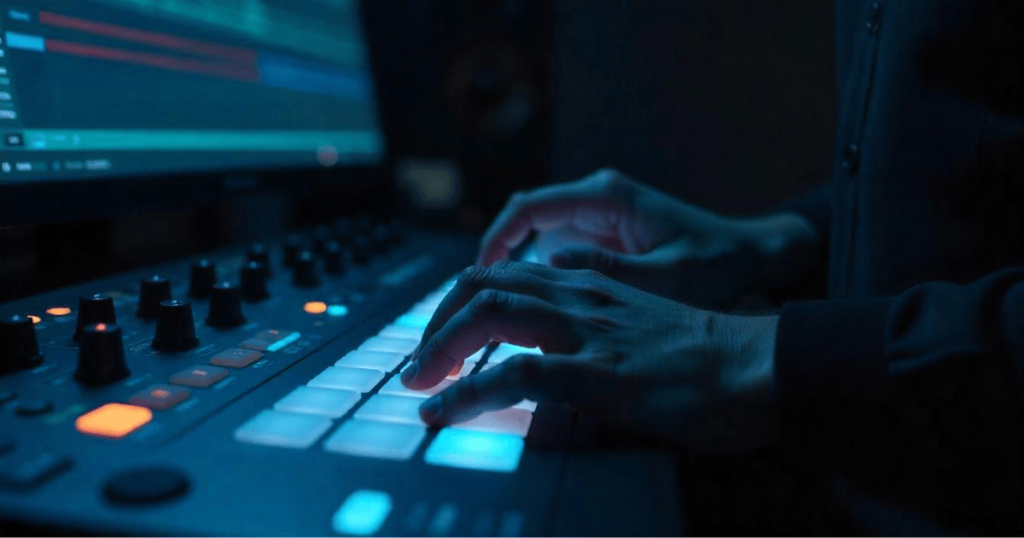
Yet, for all its evolution, the essence of trap remains the same—uncompromising, unfiltered, and unapologetically real. The rise of the trap instrumental as both a creative canvas and a cultural phenomenon is a testament to the genre’s ability to continually reinvent itself while staying true to its roots. Whether you’re producing a trap type beat or exploring the sonic nuances of instrumental trap music, the challenge is to capture that raw, unbridled energy that defined the early days of trap.
II. The Anatomy of a Trap Beat: Deconstructing the Elements
To create a trap instrumental that resonates, you need to master its core components. Let’s break down the anatomy of a trap beat instrumental piece and see what makes it tick.
1. The 808 Bass: The Heartbeat of Trap
The 808 bass is perhaps the most iconic sound in trap music. Born from the Roland TR-808 drum machine, this low-frequency throb is more than just a sound—it’s an attitude. The 808 bass provides the foundation upon which every other element is built. Its deep, booming vibrations are essential for that signature trap vibe, making it impossible to ignore.
When crafting your trap instrumental music, experiment with the 808’s decay, pitch, and modulation. Don’t be afraid to let the bass breathe and sometimes even dominate the mix. This isn’t just about creating a beat; it’s about instilling a physicality that makes the listener feel every thump and reverberation.
2. Percussion Patterns: The Syncopated Soul
Trap’s percussion is a masterclass in minimalism and precision. The hi-hats, snares, and claps aren’t there to overwhelm; they’re there to accentuate. A rapid-fire cascade of hi-hats, sometimes with intricate rolls and stutters, adds a layer of complexity that contrasts beautifully with the simplicity of the bass.
- Hi-Hats: Experiment with triplets, stutters, and even unconventional rhythmic patterns. The key is to keep them unpredictable, almost like a heartbeat that varies with the intensity of the track.
- Snares/Claps: A crisp snare hit on the 2nd and 4th beats (or a combination of snare and clap) can bring a classic trap feel to your trap type beat. Play around with layering different sounds to create a unique texture.
- Percussive FX: Add subtle elements like rimshots or percussion loops that give your track an organic feel. These are the hidden details that can transform a generic beat into a signature sound.
3. Melodic Elements: The Ethereal Overlays
While the rhythmic elements provide the skeleton, the melodies are the soul of the track. In trap, melodies often take a backseat to the beat, but they can be the difference between a forgettable loop and a memorable trap instrumental masterpiece.
- Synth Lines: Use moody, atmospheric synths that float above the hard-hitting percussion. Whether it’s a melancholic piano line or a futuristic arpeggio, the melody should evoke emotion and create a sense of space.
- Sampled Loops: Incorporate samples from unexpected sources—a soulful vocal snippet, a vintage record crackle, or even a snippet from a forgotten film. This eclectic mix can infuse your instrumental trap music with layers of meaning and context.
- Counter-Melodies: Sometimes, less is more. A subtle counter-melody can provide a counterpoint to the main theme, adding depth without overshadowing the primary elements.
4. Arrangement and Dynamics: The Storytelling Arc
A trap beat instrumental isn’t just a static loop; it’s a narrative. Think of your track as a story with a beginning, middle, and climax.
- Intro: Set the tone with an atmospheric build-up. This could be as simple as filtered 808 bass or a sparse melody that hints at the chaos to come.
- Build-Up: Gradually layer in percussion and melodic elements, increasing the intensity. This is where tension builds, setting the stage for the drop.
- Drop: The moment where all elements collide—a visceral explosion of sound that demands attention. The drop should be a culmination of the tension built in the earlier sections.
- Bridge/Breakdown: A moment of reprieve, where the listener can catch their breath. This section is crucial for maintaining interest and preventing monotony.
- Outro: Wind down the narrative with a reflective tone, leaving the listener with a lasting impression of the journey they’ve just experienced.
III. The Rebellion of Authenticity: Why “Real” Trap Beats Matter
In an era dominated by algorithm-driven playlists and cookie-cutter production techniques, the call for authenticity in trap music has never been louder. There’s a dangerous trend toward homogenization—a relentless pursuit of the perfect trap type beat that fits every commercial template. But real artistry demands risk, innovation, and a willingness to defy expectations.
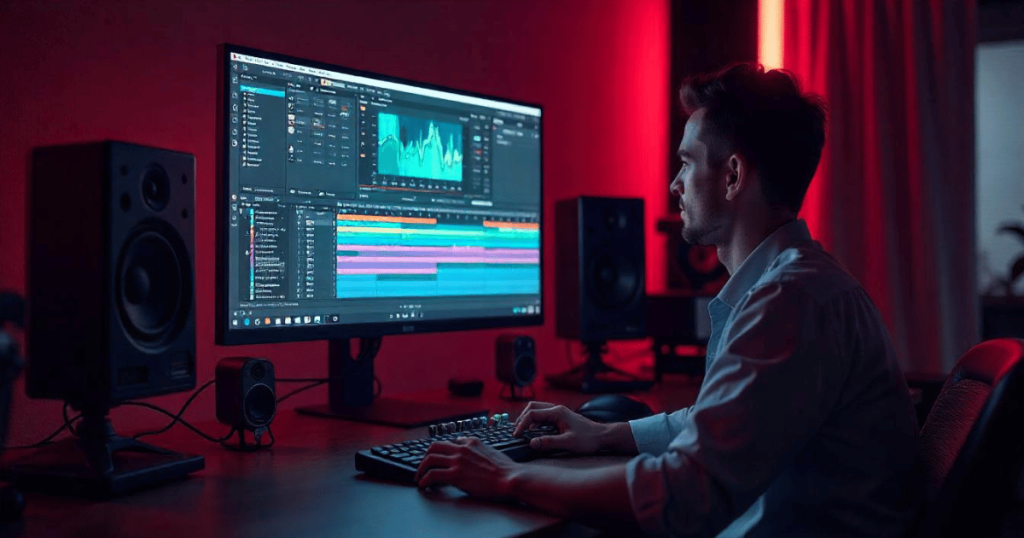
The Algorithm vs. The Artist
Commercial success in today’s music industry often hinges on striking the right balance between marketability and originality. However, in the realm of instrumental trap music, there’s a fierce underground movement that rejects the status quo. Producers are challenging the very foundations of the genre by experimenting with unconventional structures, incorporating elements from disparate musical traditions, and even collaborating with artists from outside the hip-hop sphere.
Take the case of emerging producer Rico Waves, who broke onto the scene by blending traditional trap elements with ambient soundscapes and live instrumentation. His approach to the trap instrumental was a deliberate rebellion against formulaic production—a method that prioritized raw emotion and artistic experimentation over conforming to industry standards. Rico’s tracks, often built around unconventional 808 modulations and off-kilter percussion patterns, quickly gained traction among listeners who craved authenticity.
Exposing the Contradictions
There’s an inherent contradiction in a genre that was born out of rebellion yet has been co-opted by mainstream culture. The commercialization of trap has led to a dilution of its original message, transforming a once radical art form into a predictable commodity. This guide is a rallying cry for producers to reclaim the rebellious spirit of trap by focusing on authenticity over convenience.
- Innovation vs. Imitation: The industry’s obsession with the latest trap type beat formula often stifles creativity. It’s easy to rely on pre-made loops and digital presets, but the true essence of trap lies in experimentation—taking risks that might defy conventional expectations.
- Cultural Appropriation vs. Cultural Appreciation: As trap has become global, it’s imperative to acknowledge its roots in the lived experiences of marginalized communities. Producers must navigate the fine line between drawing inspiration from the culture and commodifying its struggles for mass appeal.
- Algorithmic Perfection vs. Human Imperfection: The very tools that make digital production accessible can also render it soulless. Embracing imperfections—the off-beat timing, the raw distortions, the accidental glitches—can infuse your trap instrumental music with a humanity that resonates with listeners.
IV. The How-To: Crafting Your Own Authentic Trap Instrumental
Enough talk of theory and history. It’s time to get into the trenches. This section is a step-by-step guide that combines technical precision with cultural insight. Whether you’re a seasoned producer or just starting out, these insights will help you craft a trap instrumental that stands out in a saturated market.
Step 1: Setting Up Your Digital Playground
Before you can start creating, you need to choose your tools. Most modern producers rely on DAWs like FL Studio, Ableton Live, or Logic Pro. Each has its strengths, but the key is to find the one that aligns with your workflow.
- FL Studio: Favored by many trap producers for its intuitive interface and robust library of samples.
- Ableton Live: Known for its versatility and excellent live performance capabilities.
- Logic Pro: A solid choice for those who want a more integrated, Apple-centric experience.
Take the time to familiarize yourself with your chosen DAW. Explore the built-in instruments and effects, and don’t be afraid to invest in high-quality plugins—especially those that emulate the iconic sounds of the Roland TR-808.
Step 2: Laying Down the Foundation—The 808 Bass
Start by crafting your 808 bassline. This isn’t just a sound effect; it’s the heartbeat of your track.
- Sound Selection: Choose an 808 sample that has a deep, resonant tone. You can find plenty of free 808 samples online, but investing in a high-quality sample pack might be worth it if you’re serious about authenticity.
- Tuning and Modulation: Experiment with tuning your 808 to the key of your track. Modulate the pitch over time to create a sense of movement and depth.
- Layering: Consider layering multiple 808 samples to create a richer, more textured sound. A subtle layering can bring out nuances that a single sample might miss.
- Effects: Use subtle distortion or saturation effects to give your 808 a gritty edge. This is where the raw, imperfect quality of analog warmth can translate into your digital world.
Step 3: Building the Percussive Backbone
With your 808 in place, it’s time to add the percussion that will drive your trap beat instrumental.
- Hi-Hat Programming: Create a pattern that incorporates rapid-fire hi-hat rolls. Experiment with varying velocities and lengths to add a humanized feel to the sequence. Use off-beat stutters and triplets to break the monotony.
- Snare/Clap: Place your snare or clap on the 2nd and 4th beats. To elevate the sound, layer different snare samples and experiment with reverb to create a sense of space.
- Additional Percussion: Integrate elements like rimshots, claps, or even unconventional percussive sounds from field recordings. The goal is to inject your trap instrumental music with a sense of unpredictability and organic texture.
Step 4: Weaving the Melodic Fabric
Now, it’s time to address the melodic components—the elements that give your track emotional depth and narrative structure.
- Synth Lines: Start with a simple, haunting melody. Use a synth sound that evokes emotion—something airy and slightly melancholic. Let it float above the hard-hitting percussion, providing a counterbalance to the track’s aggressive elements.
- Layered Samples: Incorporate samples that add context and texture. This could be a vocal snippet from an old soul record, a vintage cinematic sound, or even ambient noise from urban environments. These layers not only enrich your instrumental trap music but also tie it back to its cultural roots.
- Counter-Melodies: Introduce subtle counter-melodies that interact with your main theme. These should be understated—more like whispers in the background that add depth without drawing too much attention.
Step 5: Arranging Your Track for Maximum Impact
A well-constructed arrangement is the difference between a looping beat and a trap type beat that tells a story.
- Intro: Begin with an atmospheric build-up. Use filtered effects, soft synth pads, or even a distant sample that hints at the track’s mood. This sets the stage for the intensity to come.
- Build-Up: Gradually layer in your percussion and melodic elements, increasing tension with each measure. Use automation to ramp up effects like reverb, delay, or filter sweeps.
- Drop: When the drop hits, it should feel like a cathartic explosion. This is the payoff for all the tension you’ve built. Ensure that the drop is well-timed and packs a punch, with every element—808s, hi-hats, snares, and synths—coming together in a visceral crescendo.
- Bridge/Breakdown: After the drop, give your listener a moment of respite. This section can strip back to just the 808 or feature a reimagined, softer version of the melody. This contrast reinforces the impact of the drop.
- Outro: Wind down your track with a gradual deconstruction of the layers. Let the listener linger on the fading echoes of your beat, leaving them with a haunting memory of the journey they’ve just experienced.
Step 6: Mixing and Mastering—The Final Crucible
Even the most innovative trap instrumental can fall flat without proper mixing and mastering. This is where your track is sculpted into a polished final product without losing its raw edge.
- EQ and Compression: Use equalization to carve out space for each element, ensuring that the booming 808 doesn’t overpower the intricate hi-hat patterns. Compression can help maintain a consistent level, but don’t overdo it—retain the dynamic fluctuations that give trap its expressive quality.
- Spatial Effects: Reverb and delay are essential tools in creating the atmospheric quality that sets instrumental trap music apart. Experiment with different types of reverb to create a sense of space without drowning the clarity of your beat.
- Saturation and Distortion: A subtle touch of saturation can add warmth and grit, making your track feel less sterile and more alive. This is particularly important for maintaining that raw, analog vibe in a digital age.
- Final Mastering: The mastering process should enhance the track’s overall impact without compromising its dynamic range. Consider professional mastering if possible, or invest time in learning the intricacies of mastering software to achieve that perfect balance.
V. Real-World Case Studies: Trailblazers and Innovators
It’s one thing to talk theory, but nothing beats learning from those who have blazed the trail. Let’s examine a few real-world examples of producers who have redefined the boundaries of trap instrumental music.
1. Rico Waves: The Maverick of Modern Trap
Rico Waves burst onto the scene with a defiant sound that blended traditional trap elements with an experimental edge. Rejecting the cookie-cutter approach of many trap type beats, Rico’s productions are characterized by their innovative use of the 808, unconventional percussion patterns, and haunting, ethereal synth lines.
- The Signature Sound: Rico’s tracks often feature a dynamic interplay between aggressive, distorted 808s and soft, ambient melodies—a juxtaposition that creates a palpable tension. His work has inspired a generation of producers to experiment beyond the standard trap formula.
- Cultural Impact: For Rico, the creation of a trap instrumental is more than a technical process—it’s an act of rebellion. His music speaks to those who feel marginalized by a homogenized industry, a testament to the enduring spirit of authentic trap.
- Lessons for Producers: Rico’s journey underscores the importance of taking creative risks. Instead of conforming to industry trends, he carved out his own niche by blending the old with the new, the raw with the refined.
2. DJ Ironclad: The Architect of the Underground
DJ Ironclad’s career is a masterclass in the evolution of instrumental trap music. Rising from the underground scene, he built his reputation on producing beats that were as uncompromising as they were infectious.
- The Sound of the Streets: DJ Ironclad’s beats often incorporate field recordings from urban environments—snippets of street sounds, murmurs of city life, and the ambient noise of a restless metropolis. These elements, interwoven with traditional trap drum patterns and soaring synths, create a soundscape that is both visceral and deeply authentic.
- Innovative Production Techniques: Known for his meticulous approach to sound design, DJ Ironclad employs a mix of analog and digital techniques. His work is a lesson in the importance of texture and nuance, proving that even in the digital age, there’s irreplaceable value in imperfection.
- The DIY Ethos: DJ Ironclad’s career is a reminder that authenticity in trap beat instrumental production isn’t about expensive gear or high-budget studios—it’s about the passion, grit, and ingenuity of the producer.
3. Mia “Beats” Rivera: The Queen of the New Wave
Mia Rivera is a trailblazer in the realm of trap instrumental music. Her productions are known for their cinematic quality and emotive depth, fusing elements of classical music with the aggressive pulse of trap.
- Breaking Boundaries: Rivera’s innovative approach often involves sampling orchestral pieces and recontextualizing them within the framework of a trap type beat. This fusion creates an unexpected, yet profoundly moving, auditory experience.
- A Cultural Catalyst: By blending genres traditionally seen as disparate, Mia challenges the entrenched boundaries of musical categorization. Her work is a powerful reminder that trap, at its core, is about breaking down barriers—both sonically and culturally.
- Inspiration for Aspiring Producers: Rivera’s journey from a bedroom producer to an internationally recognized artist is a testament to the transformative power of authenticity and persistence. Her techniques—meticulous layering, creative sampling, and a fearless approach to experimentation—offer invaluable lessons for anyone looking to craft their own trap instrumental masterpiece.
VI. Beyond the Beat: The Future of Trap Instrumentals in a Digital World
As we stand at the crossroads of tradition and innovation, the future of instrumental trap music is as unpredictable as it is exciting. The digital age has democratized music production, giving rise to a generation of producers who are unafraid to blur the lines between genres and challenge the status quo.
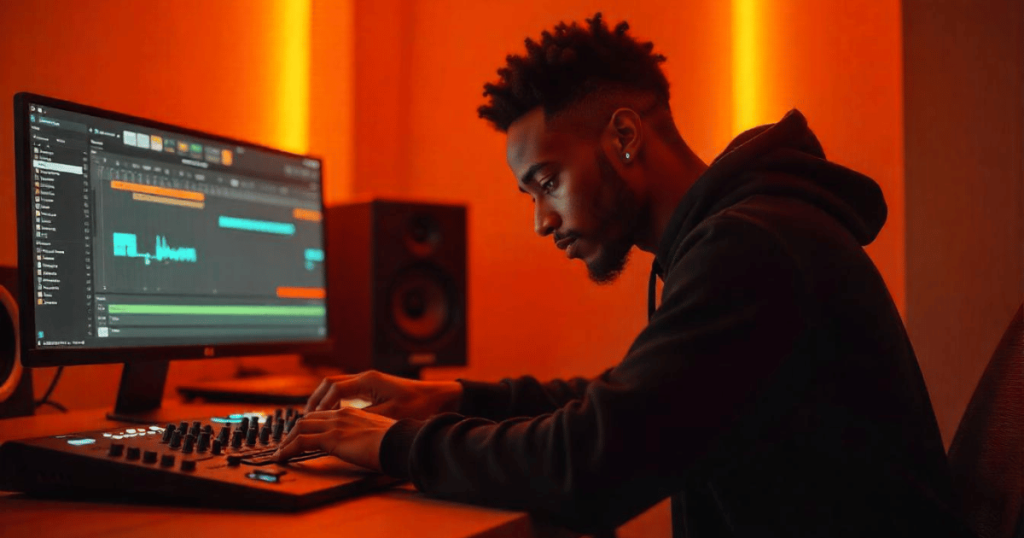
The Rise of AI and Machine Learning in Production
Artificial Intelligence (AI) is making waves in the music industry, offering tools that can analyze, generate, and even innovate on traditional production techniques. While some purists decry AI as a threat to the human element in music creation, the reality is more nuanced. AI can serve as a powerful tool—one that, when wielded with a rebellious spirit, enhances the creative process rather than replacing it.
- AI-Enhanced Production: Modern producers are integrating AI-driven tools to generate fresh ideas for trap instrumental arrangements. These tools can help identify patterns, suggest novel sample combinations, or even create entirely new sounds based on historical data.
- The Human Touch: Despite the allure of algorithmic precision, the unpredictable nature of human creativity remains irreplaceable. The true art of creating a compelling trap beat instrumental lies in the producer’s ability to infuse the digital with the analog—the calculated with the chaotic.
Globalization and the Blurring of Cultural Boundaries
Trap music, once the raw outcry of Southern streets, has now become a global phenomenon. As producers around the world adapt the genre to their local contexts, the sound of trap becomes richer and more diverse.
- Cultural Hybridity: Today’s instrumental trap music is a melting pot of influences. From the traditional melodies of African folk music to the pulsating rhythms of Eastern European electronic beats, trap has evolved into a genre that is as eclectic as it is unified.
- Local Narratives, Global Appeal: This cultural cross-pollination challenges the notion of authenticity. While some argue that trap should remain tethered to its roots, the evolution of trap instrumental music suggests that authenticity isn’t static—it’s a dynamic, ever-changing conversation between the past and the present.
The Future Producer: Embracing Imperfection and Experimentation
In a world awash with perfectly polished productions, the future of trap lies in its embrace of imperfection. The next generation of producers understands that the allure of a trap type beat isn’t in its flawless execution but in its raw, unfiltered energy.
- Embracing the Flaws: The imperfections in timing, sound quality, and arrangement can often add a layer of authenticity that resonates deeply with listeners. In a saturated market, these flaws become a signature—a reminder that behind every trap instrumental is a human being, fighting against the sterile norms of digital perfection.
- Experimentation as a Guiding Principle: Innovation in trap comes from pushing boundaries. Whether it’s through unconventional sampling techniques, hybrid genres, or entirely new rhythmic structures, the future of trap beat instrumental production is bound to be as unpredictable as it is revolutionary.
VII. Insider Tips, Tricks, and Techniques That Change the Game
This section isn’t your run-of-the-mill “how-to” guide. It’s a distillation of the underground wisdom—the insider secrets that top-tier trap producers have honed over years in dimly lit studios and late-night sessions. Here, we break down the most under-the-radar, high-impact techniques and strategies that go beyond standard tutorials, delivering that incredible flow, insane beats, and sounds that practically breathe life into your tracks.
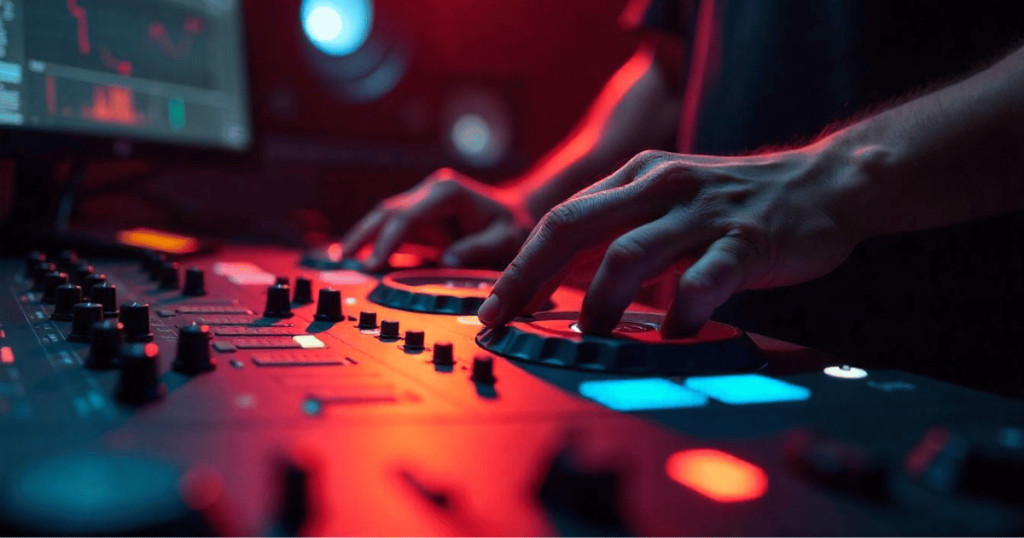
1. Crafting the Unforgettable 808
a. Micro-Tuning & Dynamic Modulation
- Custom Tuning: Instead of relying on factory presets, experiment with micro-tuning your 808s. Slight detuning or even deliberately “imperfect” tuning can add a unique warmth and character. For more tips, check out our guide on adjusting sound dynamics using our song key & BPM finder.
- Step-by-Step:
- Load a high-quality 808 sample in your DAW.
- Use a pitch envelope to gradually slide the pitch at the beginning or end of a note.
- Automate slight pitch modulations that mimic natural fluctuations—this makes the bass feel “alive.”
- Step-by-Step:
- Dynamic Decay Control: Use automation on decay and release parameters. Rather than having a static decay, let it vary across different sections of your track.
- Example: In a verse, shorten the decay to give space for vocals; in a drop, extend it for an epic, lingering boom.
b. Layering for Complexity
- Multiple 808 Layers: Combine a clean sub-bass with a mid-range 808 that has a bit of distortion or saturation.
- How-To:
- Duplicate your 808 track.
- On one layer, apply subtle distortion (e.g., using Soundtoys Decapitator) to add harmonics.
- Mix these layers at different frequencies using EQ to ensure they complement each other without clashing.
- How-To:
- Subtle FX Integration: Experiment with reverse reverb on your 808 hits. This reverse tail can create a unique lead-in to each bass note, generating anticipation and enhancing the groove.
2. Next-Level Hi-Hats and Percussion Programming
a. Creating Unpredictable Swing
- Custom Swing Curves: Don’t settle for default DAW swing settings. Craft your own curves to achieve a humanized, off-grid feel.
- Step-by-Step in FL Studio:
- Open the Piano Roll for your hi-hat sequence.
- Enable “Quantize” and adjust the swing percentage manually.
- Draw in slight, non-uniform offsets—think of it as “micro-grooving” that breaks away from robotic timing.
- Step-by-Step in FL Studio:
- Triplet Variations & Off-Grid Placement:
- Use triplet placements occasionally in an otherwise 16th-note grid to introduce tension.
- Manually nudge selected hits forward or back by a few milliseconds for an organic, “live” feel.
b. Unconventional Percussive Layers
- Field Recordings: Integrate non-musical percussion. Record ambient street sounds—like the distant rumble of traffic, a creaking door, or snippets of urban ambience—and layer them subtly underneath your primary rhythm.
- How-To:
- Record or source high-quality field recordings.
- Use a transient shaper to isolate rhythmic components from the recording.
- Blend them at a low level to add a gritty, real-world texture.
- How-To:
- Layered Snares and Claps:
- Combine a sharp digital snare with a more organic, sampled clap.
- Apply parallel processing: send both to a bus, then add a touch of reverb or a short delay to glue them together.
- Experiment with unconventional reverb settings (e.g., reverse reverb tails) to create tension before the drop.
3. Melodic Manipulation & Creative Sampling
a. Synth and Sample Alchemy
- Unconventional Synth Patches:
- Start with a basic saw or sine wave, but route it through multiple effects in unconventional orders. For example, try placing a chorus or flanger before your distortion module to create a sound that morphs as it gets distorted.
- Technique: Use granular synthesis plugins to slice your synth line into micro fragments that can be rearranged or warped in real time.
- Deep Sampling Techniques:
- Obscure Sources: Scour vinyl crates, old radio broadcasts, or independent sound libraries for obscure audio snippets.
- Chop and Warp: Instead of using a sample as-is, radically chop it into micro-slices and reassemble them into a new melodic pattern.
- Reverse Engineering: Reverse small segments of your sample, then layer them underneath the forward-playing version. The interplay between the reversed and forward elements can create a haunting, unexpected atmosphere.
b. Advanced Vocal Sampling
- Hidden Chops: Take a vocal snippet, chop it up, and re-pitch each slice to form an entirely new melodic line. Use this method sparingly to create a signature hook that hints at a familiar phrase while remaining abstract.
- Example: Extract a few syllables from an old soul track, reverse them, and blend with a reverb-drenched delay. This can give your instrumental an elusive, almost ghostly quality.
- Vocal Glitching: Use granular effects or bit-crushers on vocal samples to create stutter effects that sync perfectly with your hi-hat rolls. Adjusting the glitch timing in tandem with rhythmic variations adds a level of complexity that’s hard to replicate.
4. Arranging Like a Storyteller
a. Narrative Structure in a Loop-Driven World
- Dynamic Section Transitions:
- Instead of a static loop, think of each segment as a narrative arc. Introduce “mini-breaks” within your beat—short, stripped-down interludes that reset the listener’s attention before the next explosive drop.
- Example: Create a two-bar pause with just a filtered 808 and a faint, distant vocal sample. Let this serve as a sonic palate cleanser before launching into a more complex pattern.
- Layered Transitions:
- Use reverse cymbals, white noise risers, and unconventional FX (like granular delay swells) to signal transitions. These aren’t just fills; they’re narrative devices that provide tension and release.
- Experiment with “micro-drops”: brief moments (half a bar or less) where all elements except one are momentarily silenced, creating a sudden contrast that re-engages the listener’s ear. Check out similar transitions in our featured trap beats for inspiration.
b. Spatial Design & Automation
- 3D Panning:
- Move elements dynamically in the stereo field. For example, start a melodic line panned hard left and slowly move it to the right as the track evolves. This spatial movement adds a physical dimension to your sound.
- Technique: Use automation lanes in your DAW to precisely control panning movements over time.
- Volume & Filter Automation:
- Automate EQ filters on individual tracks to create evolving textures. For instance, gradually introduce a high-pass filter on a synth line during the build-up, then cut it suddenly at the drop for a full-bodied impact.
- Use volume automation to “breathe” life into loops. A subtle crescendo on a hi-hat pattern over several bars can build anticipation in a way that static loops never will.
5. Mixing Mastery: The Secret Sauce
a. Parallel Processing & Sidechain Techniques
- Parallel Compression:
- Send your drums to a parallel bus and compress them heavily. Blend this with the uncompressed signal to maintain punch while adding heft. This is crucial for that “in-your-face” trap feel without sacrificing clarity.
- Step-by-Step:
- Route your drum group to a new bus.
- Apply aggressive compression (try settings with a high ratio and fast attack).
- Mix the processed signal back in subtly, ensuring you retain the original transients.
- Creative Sidechain:
- Beyond the typical kick-to-bass sidechain, experiment with multi-band sidechaining where different frequency bands trigger different ducking behaviors.
- Example: Let the mid-range frequencies of a snare slightly duck the synth pads, which creates an interplay between rhythm and melody that’s both subtle and powerful.
b. Unorthodox Effects Chains
- Effect Reversal & Reordering:
- Instead of the typical chain order, try reversing your effects. For instance, send a reverb signal through a distortion unit. The result is an unpredictable, textured ambience that adds character.
- Layered Saturation:
- Apply multiple rounds of gentle saturation rather than one heavy-handed instance. Use different plugins (e.g., iZotope Trash, Soundtoys Decapitator, FabFilter Saturn) in series, each adding its own flavor of warmth and edge.
- Pro Tip: Run subtle saturation on individual elements (hi-hats, snares) before the group bus, then apply another layer on the mix bus to glue everything together.
6. Hidden Resources and Community Secrets
a. Underground Sample Packs and Sound Libraries
- Beyond the Mainstream:
- Look for sample packs that aren’t heavily promoted. Independent producers often sell or share unique libraries on forums like Future Producers, Gearslutz, or specialized Discord servers.
- Tip: Engage in online communities—many underground producers trade custom-made samples that are never widely circulated.
b. Niche Plugins and Experimental Tools
- Obscure Effects Plugins:
- Explore lesser-known plugins like Glitchmachines for unexpected stutter effects, or Audio Damage’s Kombinat for analog-style modulation.
- DIY Plugins: Experiment with scripting your own effects in Reaper’s ReaScript or Max for Live in Ableton—these can be tailored to your specific creative needs.
c. Collaborative Platforms & Live Feedback
- Mastermind Groups:
- Create or join small groups of trusted producers who are willing to share their “secret sauce.” In many cases, the best insights come from direct, candid conversations about tweaking every parameter until it sings.
- Real-Time Remix Sessions:
- Participate in live remix challenges on Twitch or Discord. The immediacy of feedback often forces you to try techniques you’d never experiment with in isolation, leading to breakthroughs that can redefine your sound. For a leaderboard of top producers, visit the monthly leaderboard.
7. Insider Workflow Hacks for Maximum Creativity
a. Template Warfare
- Custom Production Templates:
- Build your own templates that incorporate all your favorite routing, effect chains, and automation lanes. These are not generic starting points—they’re battle-tested frameworks that give you a head start on creativity.
- Example: Create a template that instantly splits your 808, drums, and synths into parallel processing chains with preloaded custom FX—this lets you jump right into experimentation without fiddling with every detail from scratch.
b. The “Freeze & Resample” Technique
- Resampling for Freshness:
- Frequently “freeze” a section of your track—render it to audio, then chop and reprocess it. This method forces you to listen to your work with fresh ears and often uncovers hidden textures or unexpected rhythms.
- How-To:
- Bounce a loop (e.g., your hi-hat pattern with added effects).
- Import the rendered audio back into a new track.
- Slice and rearrange it, applying further effects like granular delay or reverb. This creates a “new” sample that retains the original’s vibe but has its own distinct character.
c. A/B Testing Your Mixes
- Comparative Analysis:
- Routinely create alternate versions of your mix—one with your experimental tweaks and one without. Listen critically to determine which aspects of your processing truly elevate the track.
- Tip: Use reference tracks from producers you admire, but avoid mimicking them outright. Instead, identify what makes their sound impactful and integrate your unique twist.
These aren’t your run-of-the-mill production tips. They’re battle-hardened techniques forged in the crucible of real studio sessions—methods that, when applied with care and creativity, can elevate your trap instrumental music from a mere loop to an evocative, visceral narrative. Each trick is a small revolution, a deliberate act of defiance against a cookie-cutter sound.
VIII. Challenging the Norms: A Call to Action for the Next Generation of Producers
In the spirit of rebellion that has always defined trap, this is a call to arms for every aspiring producer. The era of manufactured, algorithmic perfection is over. The future belongs to those who dare to experiment, to innovate, and to defy the expectations of an industry that has long lost its edge.
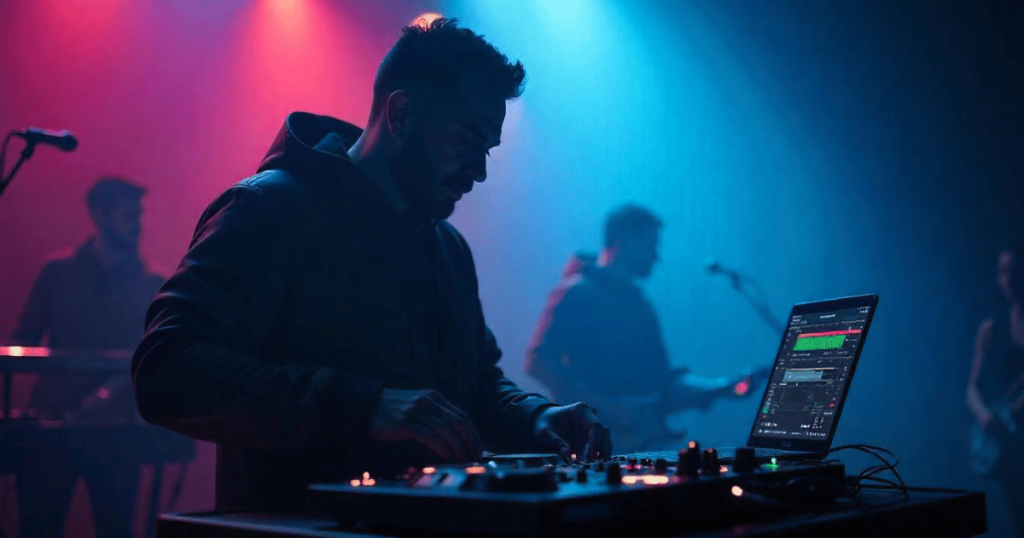
Embrace Your Roots, but Forge Your Own Path
Understanding the origins of instrumental trap music is crucial, but it shouldn’t confine you. Use the rich history of trap as a launching pad—a foundation upon which you build something entirely new. The most compelling trap type beat is one that pays homage to its roots while boldly stepping into uncharted territory.
Rejecting Homogenization in Favor of Authentic Expression
The marketplace is flooded with countless tracks that follow the same template. Instead of following the herd, strive to be the outlier—the producer whose trap instrumental breaks the mold. Infuse your work with your personal experiences, your cultural background, and your raw emotions. In a world where every beat is engineered to fit a formula, authenticity is your most powerful asset.
The Revolution is Now: Experiment, Collaborate, Innovate
The tools are in your hands, the cultural zeitgeist is shifting, and the future of trap instrumental music is waiting to be redefined by your creativity. Experiment with new techniques, collaborate with artists from different genres, and never settle for mediocrity. The trap revolution isn’t a destination—it’s a journey of perpetual innovation and fearless expression.
IX. The Societal Impact of Trap: More Than Just Music
Beyond the technical mastery of crafting a trap beat instrumental lies a broader cultural and societal narrative. Trap music has long served as a voice for the disenfranchised, a medium through which stories of hardship, resilience, and resistance are told.
The Voice of the Marginalized
Trap’s rise is inseparable from the social and economic struggles faced by many urban communities. The genre’s gritty sound and raw lyrical content have provided a platform for those whose stories might otherwise be ignored. By channeling their experiences into their music, trap artists have sparked conversations about inequality, systemic injustice, and the relentless fight for survival.
Cultural Commentary and Political Resonance
Beyond personal narratives, trap has evolved into a form of cultural commentary. It challenges societal norms and questions the status quo—whether through overt political statements or more subtle, coded references to a broader struggle. Every trap instrumental you create can be seen as part of this larger dialogue, a sonic reflection of a world in flux.
The Digital Frontier and the Democratization of Music
The advent of digital tools has democratized music production, enabling anyone with a computer and a passion for sound to contribute to the instrumental trap music movement. This shift has disrupted traditional gatekeeping, empowering a new generation of producers to redefine the genre on their own terms. In this context, authenticity isn’t just a stylistic choice—it’s a political statement, a refusal to be confined by the limitations of a homogenized industry.
X. The Unyielding Spirit of Trap
As we draw this extensive exploration to a close, remember that the art of creating authentic trap instrumental music is more than a technical exercise—it’s an act of rebellion, a commitment to innovation, and a declaration of individuality in a world that often demands conformity.
Your journey as a producer is both personal and universal. It’s a dialogue between the past and the future, a collision of tradition and avant-garde experimentation. Whether you’re meticulously crafting a trap type beat from scratch or layering sounds to create a haunting trap instrumental, your work contributes to a broader cultural narrative—one that speaks to the struggles, the aspirations, and the unyielding spirit of a generation determined to make its mark.
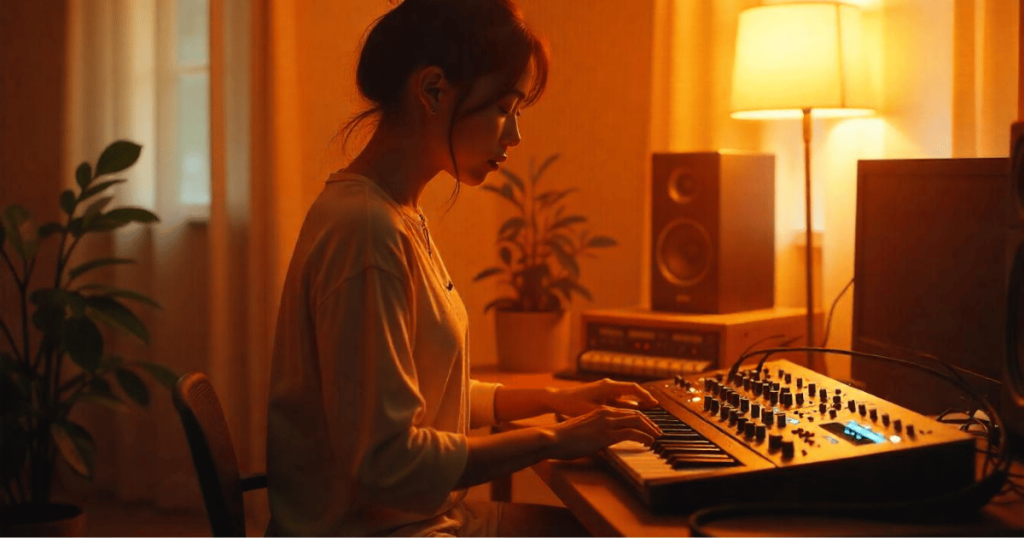
A Call for Future Innovators
Take this guide not as a rigid blueprint, but as a starting point—a manifesto urging you to challenge assumptions, to expose contradictions, and to push the boundaries of what trap instrumental production can be. Let every beat, every hi-hat roll, and every deep 808 reverberation be a testament to your creative soul, a declaration that the true essence of trap lies in its authenticity and its relentless pursuit of expression.
The Journey Continues
In the end, the beauty of trap is that it’s never truly finished. It’s an ongoing evolution—a genre that adapts, grows, and reinvents itself with every new track. And as you embark on your own creative journey, remember that the power to shape the future of instrumental trap music lies within you.
So fire up your DAW, experiment with your sounds, and dare to be different. The streets of trap are waiting for your story, your rhythm, and your raw, unfiltered voice. This is your moment to redefine what it means to create a trap beat instrumental—to break free from the constraints of conventionality and embrace a future where every note, every sample, and every beat is a bold statement of who you are.
XI. The Cultural Resonance of a Movement
Looking back at the trajectory of trap, one sees a genre that has always been more than the sum of its parts. It is a living, breathing movement—a cultural force that challenges societal norms and gives a voice to those who have been silenced. The evolution of trap instrumental music is not just about innovative production techniques or groundbreaking sounds; it’s about the power of art to transform lives, to spark conversations, and to serve as a mirror reflecting the complex tapestry of human experience.
As you continue to experiment, innovate, and push the boundaries of what a trap type beat can be, remember that every sound you create carries the weight of a rich cultural history and the promise of a future defined by bold, authentic expression.
XII. A Practical Roadmap to Mastery
For those hungry for more than just theory—here’s a distilled, practical roadmap to mastering the art of the trap instrumental:
- Invest in Your Tools: Whether it’s the latest DAW, high-quality sample packs, or analog synths, equip yourself with the best tools you can access.
- Study the Masters: Analyze tracks by innovators like Rico Waves, DJ Ironclad, and Mia Rivera. Deconstruct their arrangements, note the subtle nuances in their sound design, and understand the cultural context behind their music.
- Experiment Relentlessly: Push your creative boundaries. Mix genres, play with unconventional rhythms, and don’t fear the unexpected. Remember, every experiment—even the failed ones—is a step toward mastery.
- Collaborate and Learn: Join online communities, attend workshops, and share your work with peers. The collaborative energy of the producer community is a wellspring of inspiration.
- Stay True to Your Voice: Amid the clamor of trends and algorithmic precision, maintain your unique perspective. Let your trap instrumental music be a reflection of your experiences, your struggles, and your unyielding creative spirit.
- Keep Evolving: The world of trap is in constant flux. Stay curious, keep learning, and adapt your techniques to reflect the changing soundscape of modern music.
XIII. The Beat That Never Dies
In this sprawling journey through the world of trap beat instrumental creation, we’ve traversed the historical roots, deconstructed the technical elements, and unearthed the rebellious spirit that defines authentic trap music. From the rumbling 808 bass that shakes the soul to the intricate hi-hat rolls that defy expectations, every element of a trap instrumental is a testament to the enduring power of human creativity.
This guide is not the final word—it’s a spark meant to ignite your passion for innovation. As you craft your next trap type beat or experiment with new approaches to instrumental trap music, remember that the true essence of trap lies not in perfection, but in the raw, unfiltered expression of life’s contradictions and complexities.
In an era where every beat is scrutinized, every sound analyzed, and every formula replicated, dare to be the outlier. Embrace the imperfections, revel in the experimentation, and let your trap instrumental music speak volumes about the world you inhabit—a world that is as brutal as it is beautiful, as chaotic as it is compelling.
So here’s to the creators, the rebels, and the visionaries. The beat goes on, and with every new creation, you add another chapter to the ever-evolving saga of trap. Make it count. Make it real. Make it undeniably, unapologetically yours.
